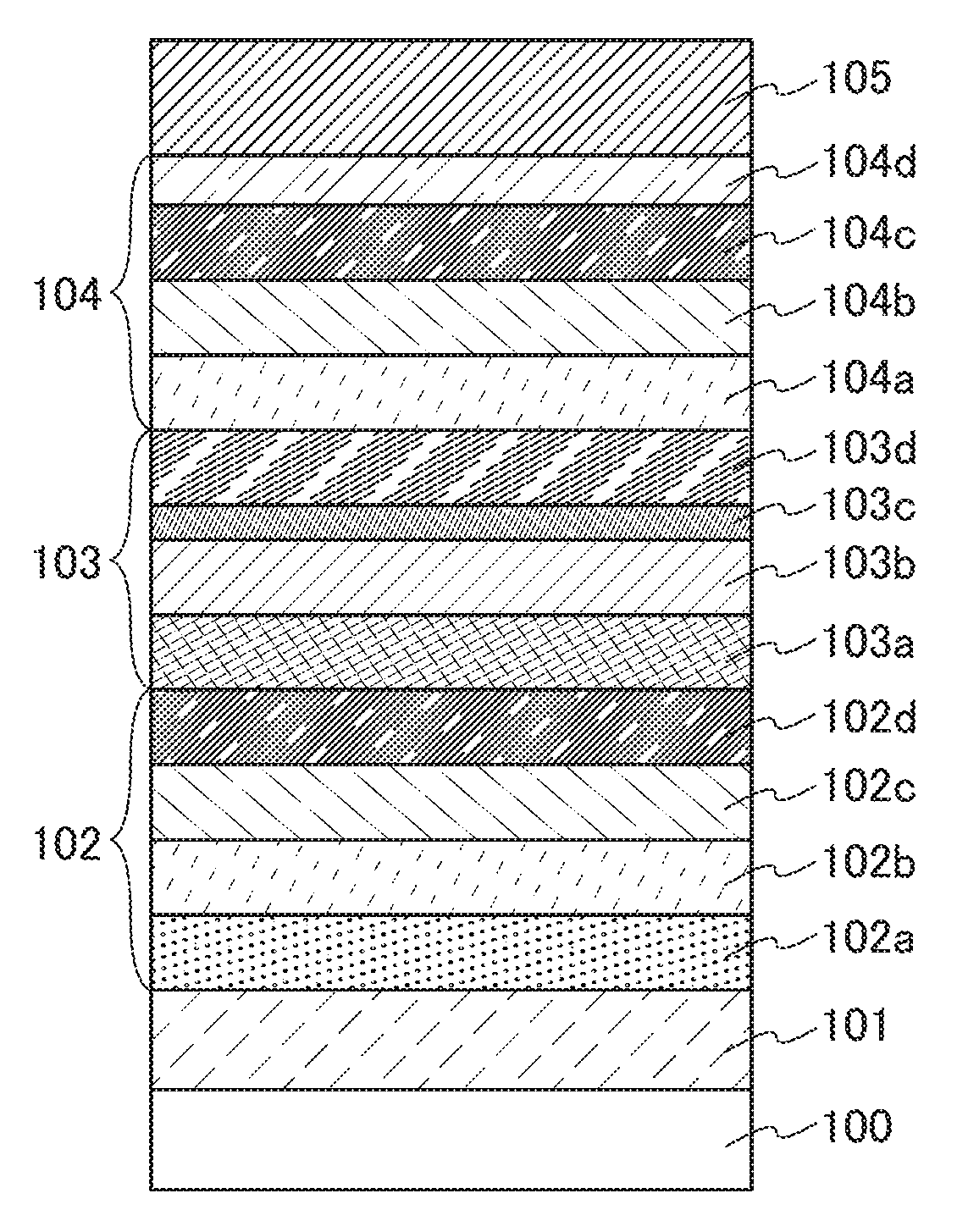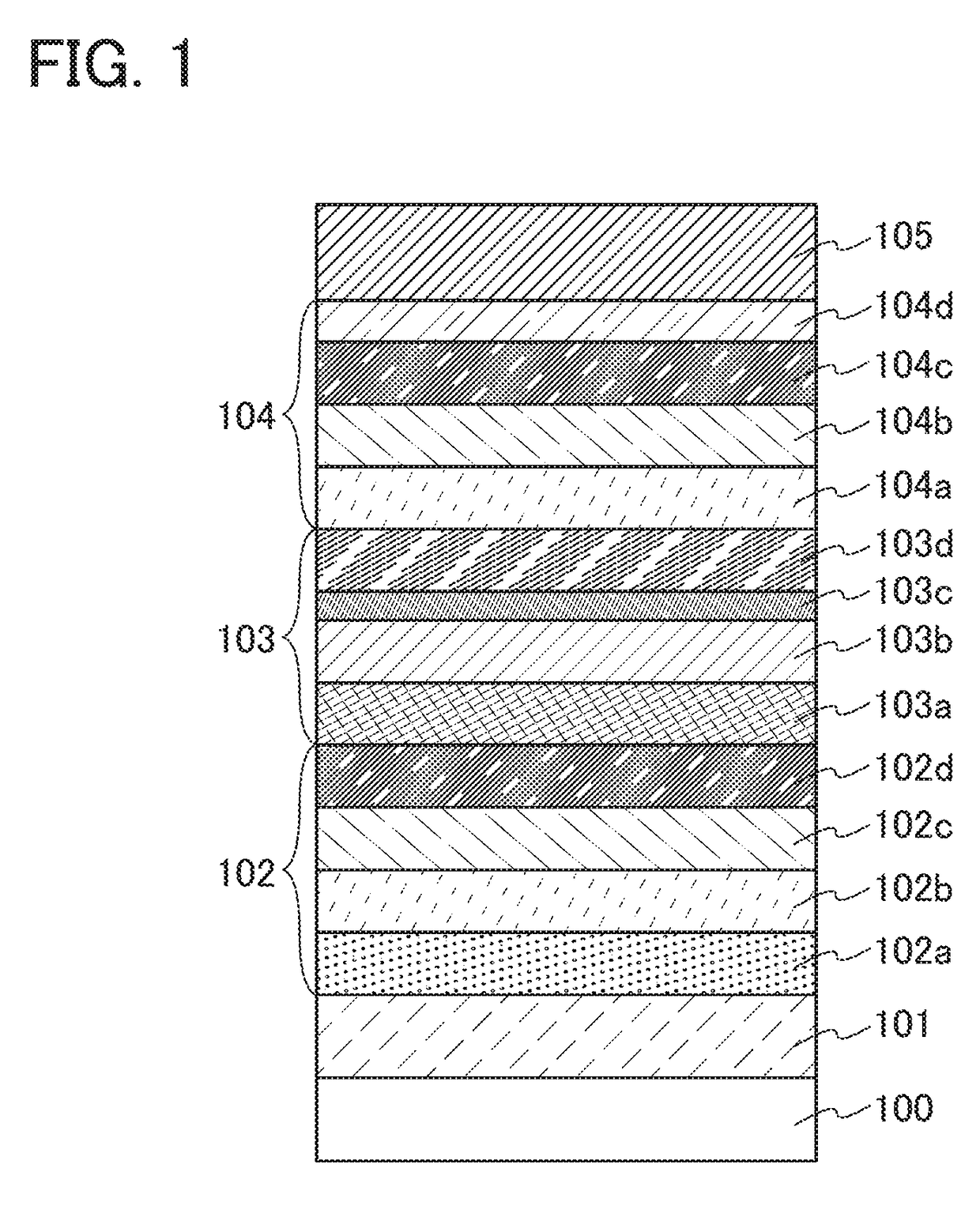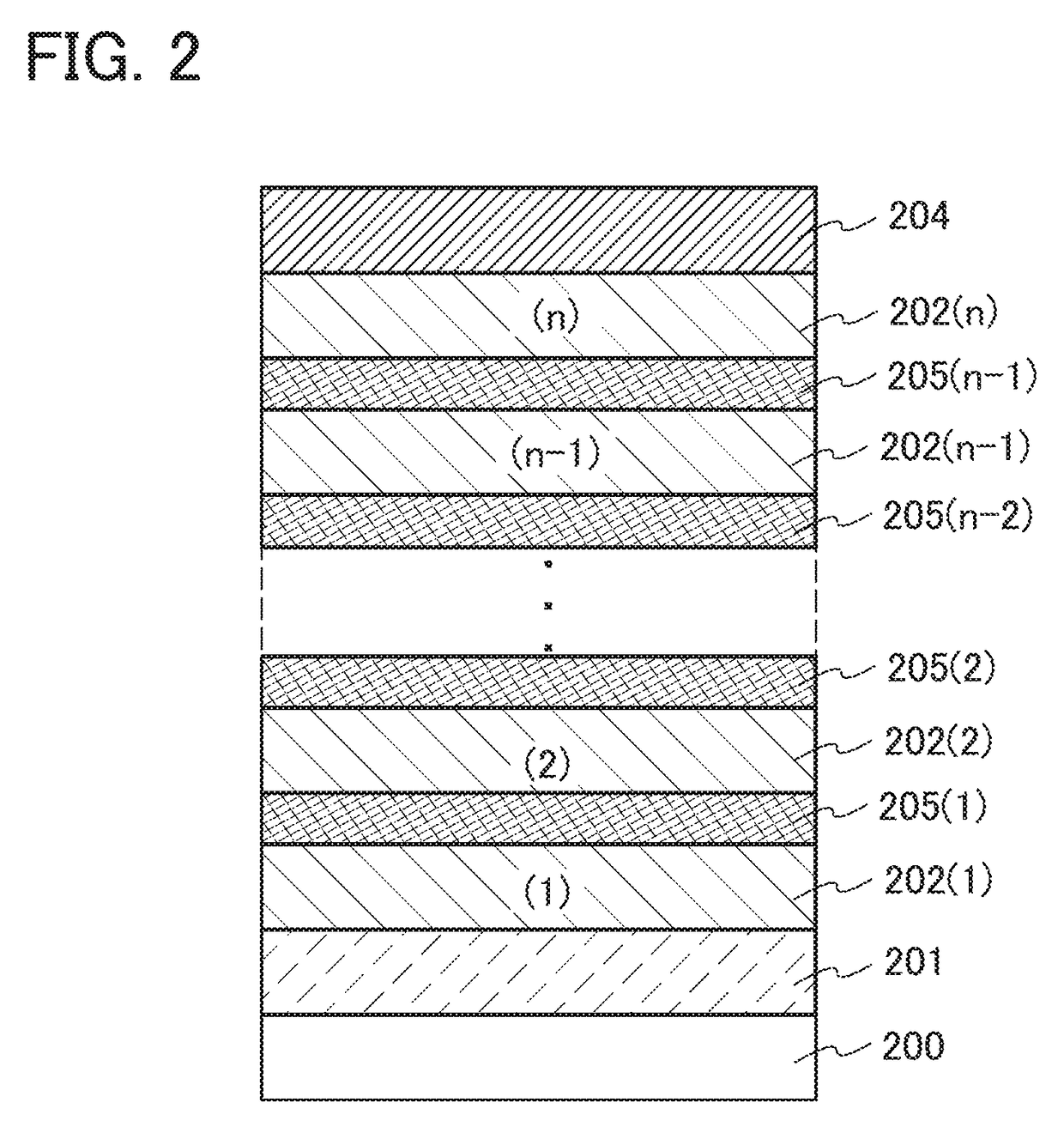Light-emitting element, lighting device, and electronic appliance
a technology of light-emitting elements and lighting devices, applied in lighting and heating apparatuses, instruments, furniture parts, etc., can solve the problems of increasing reducing their emission efficiency, so as to improve the characteristics of elements, increase the drive voltage of light-emitting elements, and reduce the effect of emission efficiency
- Summary
- Abstract
- Description
- Claims
- Application Information
AI Technical Summary
Benefits of technology
Problems solved by technology
Method used
Image
Examples
embodiment 1
[0058]In this embodiment, a light-emitting element of one embodiment of the present invention is described with reference to FIG. 1.
[0059]FIG. 1 illustrates a light-emitting element including a first EL layer 102, an intermediate layer 103, and a second EL layer 104 between a cathode 101 and an anode 105. Although the number of the EL layers is two in this embodiment, three or more layers may be stacked. The cathode 101 is formed over a substrate 100, the first EL layer 102 is formed over the cathode 101, the intermediate layer 103 is formed over the first EL layer 102, the second EL layer 104 is formed over the intermediate layer, and the anode 105 is formed over the second EL layer 104; thus, the light-emitting element is fabricated. A field effect transistor (FET) may be formed between the substrate 100 and the cathode 101, and a signal supplied from the field effect transistor (FET) is input to the cathode 101.
[0060]The cathode 101 is formed over the substrate 100. For the catho...
embodiment 2
[0115]In this embodiment, a light-emitting device including the light-emitting element described in Embodiment 1 is described.
[0116]The light-emitting device may be either a passive matrix type light-emitting device or an active matrix type light-emitting device. The light-emitting element described in Embodiment 1 can be applied to the light-emitting device described in this embodiment.
[0117]In this embodiment, an active matrix type light-emitting device is described with reference to FIGS. 3A and 3B.
[0118]FIG. 3A is a top view illustrating a light-emitting device and FIG. 3B is a cross-sectional view taken along the chain line A-A′ in FIG. 3A. The active matrix type light-emitting device according to this embodiment includes a pixel portion 502 provided over an element substrate 501, a driver circuit portion (a source line driver circuit) 503, and driver circuit portions (gate line driver circuits) 504a and 504b. The pixel portion 502, the driver circuit portion 503, and the drive...
embodiment 3
[0134]In this embodiment, examples of a variety of electronic appliances fabricated using a light-emitting device including the light-emitting element described in Embodiment 1 are described with reference to FIGS. 4A to 4D.
[0135]Examples of electronic appliances that include the light-emitting device are television devices (also referred to as TV or television receivers), monitors for computers and the like, cameras such as digital cameras and digital video cameras, digital photo frames, cellular phones (also referred to as portable telephone devices), portable game consoles, portable information terminals, audio playback devices, large game machines such as pin-ball machines, and the like. Specific examples of these electronic appliances are illustrated in FIGS. 4A to 4D.
[0136]FIG. 4A illustrates an example of a television device. In a television device 7100, a display portion 7103 is incorporated in a housing 7101. Images can be displayed by the display portion 7103, and the ligh...
PUM
| Property | Measurement | Unit |
|---|---|---|
| work function | aaaaa | aaaaa |
| hole mobility | aaaaa | aaaaa |
| curvature radius | aaaaa | aaaaa |
Abstract
Description
Claims
Application Information
 Login to View More
Login to View More - R&D
- Intellectual Property
- Life Sciences
- Materials
- Tech Scout
- Unparalleled Data Quality
- Higher Quality Content
- 60% Fewer Hallucinations
Browse by: Latest US Patents, China's latest patents, Technical Efficacy Thesaurus, Application Domain, Technology Topic, Popular Technical Reports.
© 2025 PatSnap. All rights reserved.Legal|Privacy policy|Modern Slavery Act Transparency Statement|Sitemap|About US| Contact US: help@patsnap.com



